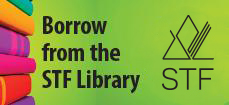Course Configurations
| (a) | Discuss the relationship between one’s credit history and current and future access to credit. |
| (b) | Discuss reasons why debts may be considered as “good” or “bad.” |
| (c) | Research the indebtedness of Canadians including the current debt to income ratio in Saskatchewan and other parts of the country. |
| (d) | Discuss reasons why the debt to income ratio might vary from one area of the country to another. |
| (e) | Discuss the potential impact of carrying too much debt on self and others. |
| (f) | Research the relationship between financial well-being and physical, emotional and mental health and well-being. |
| (g) | Investigate ways to manage one’s debt including consolidation of loans. |
| (h) | Investigate conditions necessary for debt to be sent to debt collection and how this might affect one’s future access to credit. |
| (i) | Research protection provided to debtors by the Saskatchewan Limitations Act, 2004. |
| (j) | Research where (e.g., Consumer Protection Division of the Financial and Consumer Affairs Authority) Saskatchewan consumers can get help when a collection agency or lender is perceived to have acted unfairly or illegally. |














This Canadian resource supports the Financial Literacy curriculum and provides information at a suitable introductory level. The resource is organized under six headings for a total of 15 modules.
Topics covered:
- Goals, Values and Decision-making
- Getting and Earning Money
- Spending Money and Taking Control
- Borrowing Money and Using Credit
- Saving and Investing Money
- Protecting Assets and Planning for the Future.
The resource includes:
- Student Guide, English or French, free online PDF version or hard copies can be ordered at a minimal fee
- Teacher's Guide, English or French, free online version



This Canadian textbook is divided into five parts:
- Planning Your Personal Finances
- Managing Your Personal Finances
- Insuring Your Assets
- Investing Your Financial Resources
- Controlling Your Financial Future
The resource contains case studies, concept checks, assignments and assessment examples.
There are four purchase options:
- eBook
- eBook only (online version of textbook)
- Connect
- eBook, homework, adaptive assignments and study tools
- Connect and print text
- eBook, homework, adaptive assignments and study tools
- printed textbook
- Print text
- printed textbook only

The Indigenous Edition of Money and Youth builds on the original resource from the Canadian Foundation for Economic Education, CFEE. Damon Johnston, President of the Aboriginal Council of Winnipeg, provided guidance rooted in traditional teachings and the Seven Sacred Laws. Vanessa Everett, CEO of Economic Development with the Keewatin Tribal Council, adapted the original version by Gary Rabbior of CFEE. Input from respected individuals across Turtle Island also helped shape this edition.
Topics covered:
- Goals, Values and Decision-making
- Getting and Earning Money
- Spending Money and Taking Control
- Borrowing Money and Using Credit
- Saving and Investing Money
- Protecting Assets and Planning for the Future.
The resource includes:
- Student Guide, English, free online PDF version or hard copies can be ordered at a minimal fee
- Teacher's Guide, English, free online version

